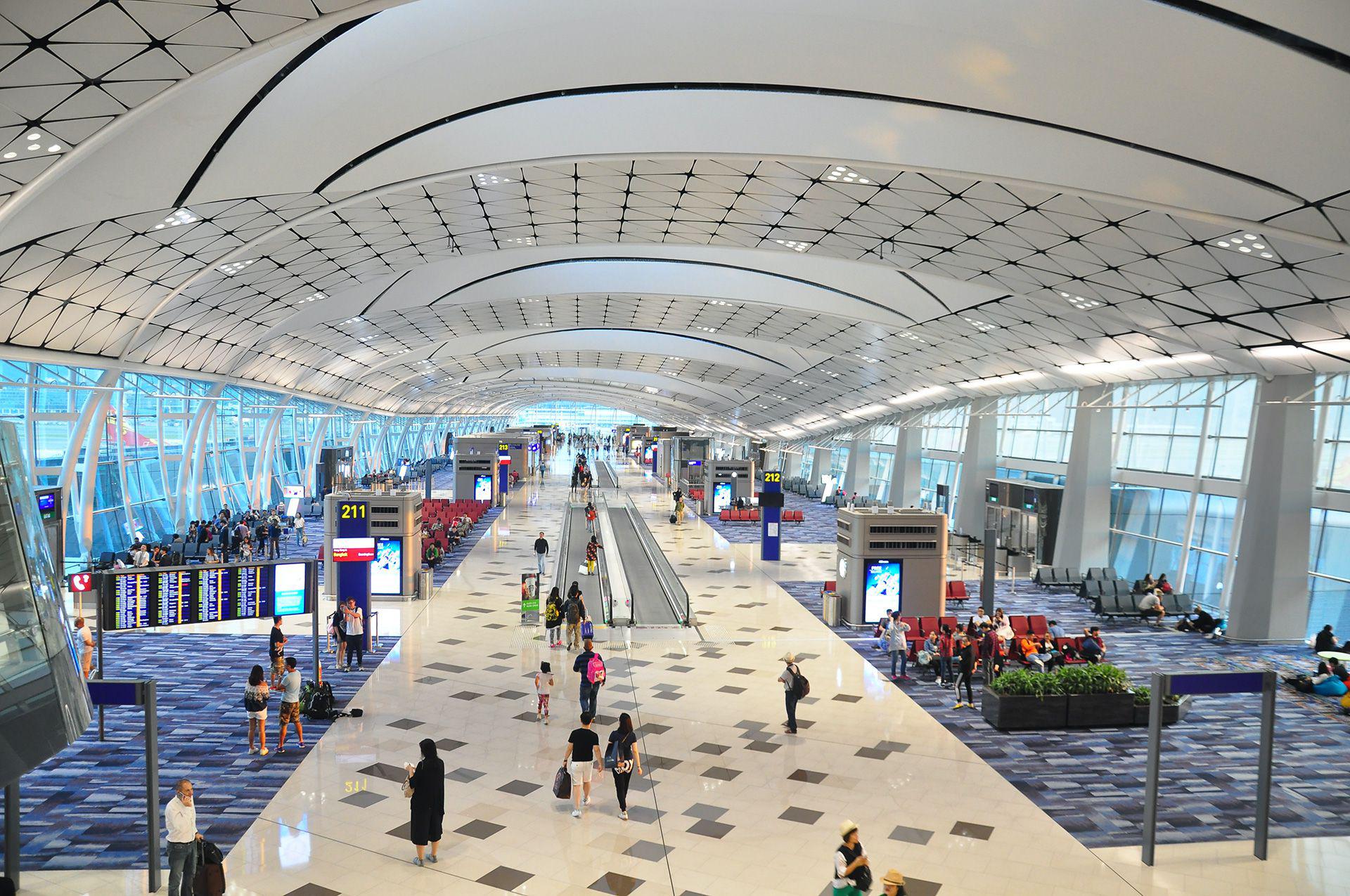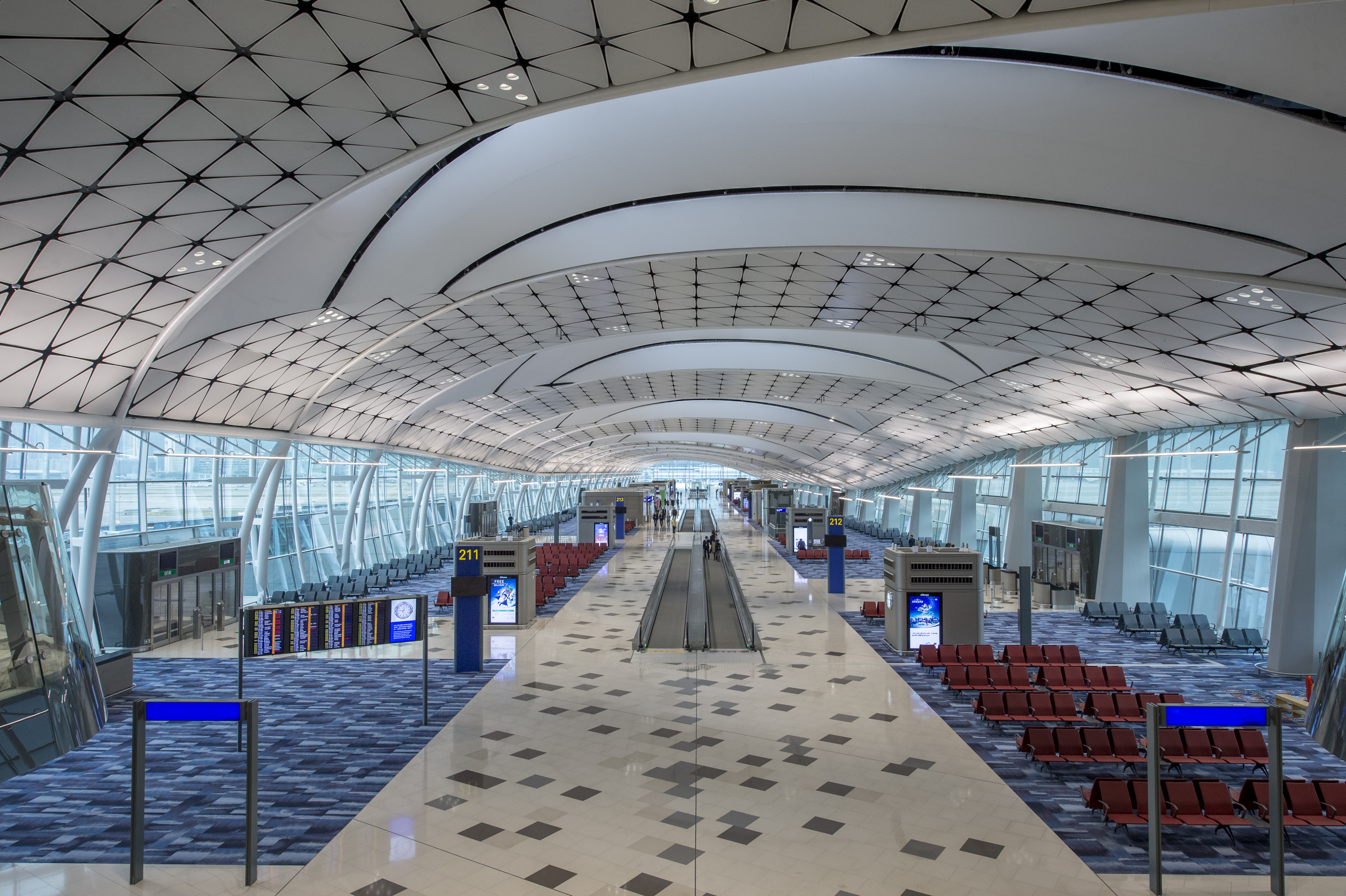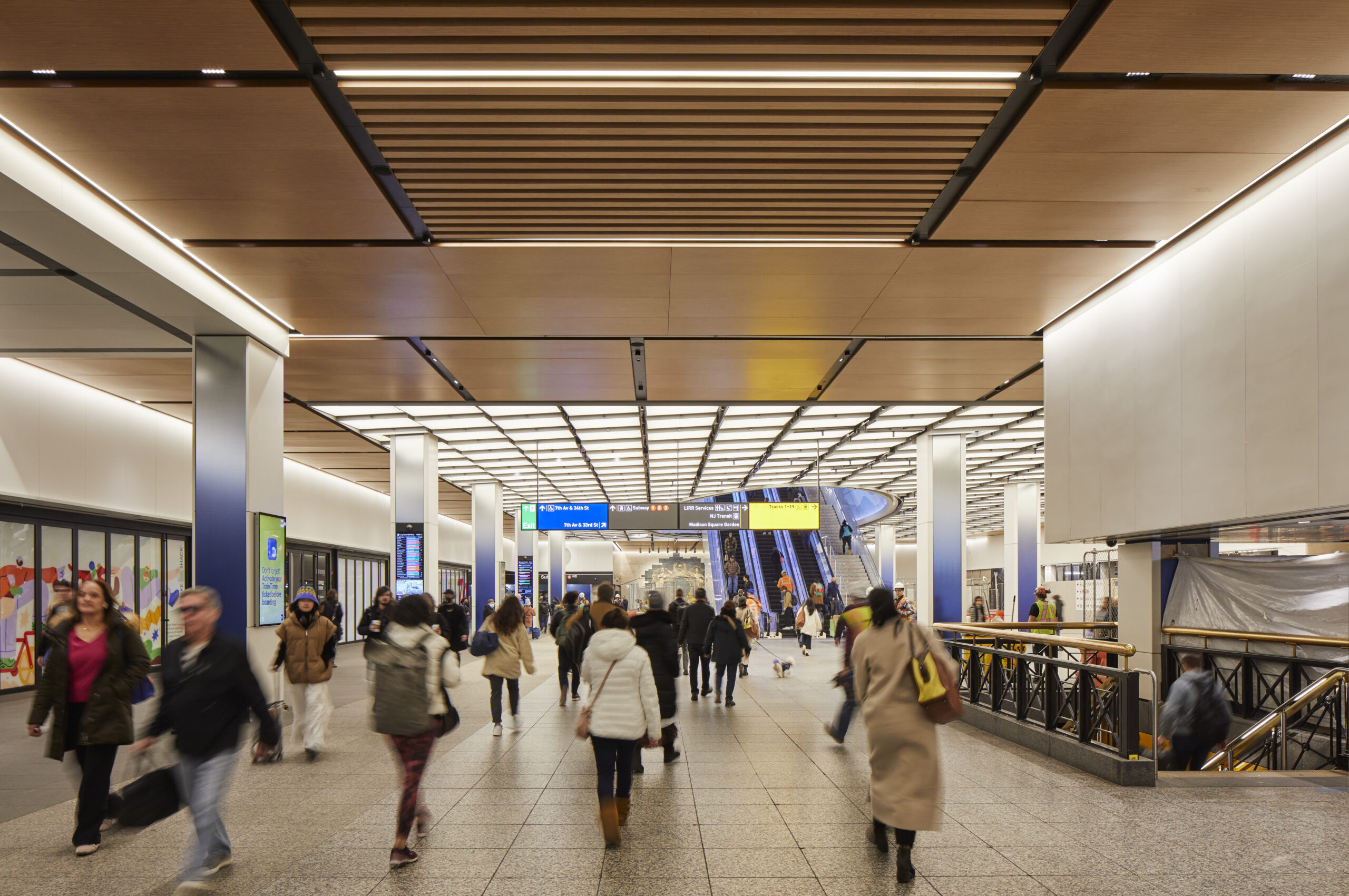The Concourse Project - Places Where Paths Meet
Have you ever found yourself in a big, open area, perhaps at a train station or an airport, where lots of people are coming and going, all heading to different spots or waiting to connect? It is, you know, that central spot where pathways or roads seem to gather, a place where folks naturally collect. This idea of people or things coming together, almost like a gentle flow, is what the word "concourse" really means at its heart. It is about a process of different elements joining up, creating a single, shared space for a little while, and then maybe moving on.
This idea of things meeting up, of paths crossing, is quite a simple one, yet it holds a lot of meaning. A concourse, in its simplest form, points to a spot where many different routes or people come to be in the same place. It could be a wide hall, a very open room in a public structure, or even a broad street that seems to invite crowds. The whole point, apparently, is to have a big area that can hold many people, allowing them to move around or just gather without feeling too cramped.
So, when we talk about "the concourse project," we are, in a way, thinking about something that embodies these very principles. It is about bringing elements together, creating points where different ideas or different functions can meet up. Just like a physical concourse helps people connect and move, a project bearing this name would logically focus on making connections, creating open areas for interaction, or perhaps smoothing out how different parts work together. It is, quite simply, about making things flow better, making it easier for various components to join up.
Table of Contents
- What is a Concourse, Actually?
- The Concourse Project - A Meeting of Ideas?
- Where Do We See Concourse Spaces?
- How Does The Concourse Project Reflect These Places?
- More Than Just a Spot
- The Concourse Project and Public Movement
- Understanding the Word Itself
- The Concourse Project - Bringing Things Together
What is a Concourse, Actually?
A concourse is, at its core, a place where different paths or ways of getting around come together. Think of it as a central gathering point, a spot where many routes converge. It is not just a small corner, but rather a big, open area that can hold a good number of people. You often find these kinds of spaces in buildings where lots of folks pass through or wait. For instance, a wide hall in a hotel might serve as a concourse, or a very large room in a convention center where many different events might be happening at once. It is a place designed for people to collect, to wait, or to move from one section to another. So, it is about that coming together, that merging of individual movements into a collective presence, even if just for a short while.
The term "concourse" also describes the very act of things coming together. It is a process, a kind of natural flow where different elements join up. This could be a group of people, or it could be different parts of a system. The meaning extends beyond just physical locations. It is about the principle of union, of separate things becoming one, even if temporarily. This joining up can create a sense of shared purpose or a shared moment. It is, you know, a pretty straightforward concept when you think about it, but its applications are quite wide. This word describes both the action of coming together and the place where that action happens, which is rather interesting.
The Concourse Project - A Meeting of Ideas?
Considering what a concourse means, "the concourse project" might well be about bringing different ideas or different parts of something to meet up. If a concourse is where people gather, then a project with this name could be about creating a space, not necessarily a physical one, where thoughts or plans come together. It could aim to connect various pieces of a bigger picture, allowing them to merge and work as a single unit. This kind of project would likely focus on making sure different elements can easily find each other and combine their efforts. It is, in some respects, about making sure that everything has a clear path to join up with other things, creating a more complete picture. So, the whole idea behind "the concourse project" might be to build bridges, so to speak, between various components.
Think about how a concourse in a building allows many different people to move through it, each with their own destination, but all sharing that central space for a moment. "The concourse project" could similarly aim to create a common ground for various concepts or different groups of people to interact. It would be about making it simple for these separate entities to come into contact and perhaps influence each other. This means the project would prioritize ease of connection and the creation of shared areas. It is, basically, about making sure that everyone or everything has a chance to come together, even if they are heading in different directions later on. The focus would be on the act of meeting, the joining up, and the shared presence that results from it.
Where Do We See Concourse Spaces?
You can spot a concourse in many different kinds of public spots. For example, a railway station will often have a very large open area where folks wait for their trains or move from one platform to another. This wide, open space is a concourse. Similarly, an airport terminal has these big rooms where travelers collect themselves before boarding their planes or after landing. These are classic examples of what a concourse looks like in real life. They are built to handle lots of people at once, making sure everyone has enough room to move around without feeling too squished. They are, quite simply, spots where many different individual journeys intersect, even if just for a short time.
The term is not just for places connected to travel, though. You might also find a concourse in a big hall, like one used for exhibitions or large public events. It is that big, central area where people can walk around, meet up, or simply take a break. Shopping centers, too, often feature large open spaces or main walkways where many people gather, especially around popular shops or food areas. These areas serve as concourses, too. They are designed to manage the flow of many people, providing a comfortable space for them to be in. So, whether it is for catching a train, attending a big event, or just doing some shopping, these wide, open gathering spots are what we call concourses.
How Does The Concourse Project Reflect These Places?
If "the concourse project" takes its name from these physical gathering places, then it would, in a way, aim to create a similar kind of central meeting point, but perhaps in a different context. Just as an airport concourse helps many travelers find their way, "the concourse project" might be about making a system or a process that helps many different pieces come together in an orderly fashion. It would focus on creating a smooth flow, ensuring that different components can easily connect and move towards a shared purpose. It is, after all, about making things accessible and easy to navigate for everyone involved. So, you know, it is about that sense of bringing things together in an organized and open way.
Consider a stadium concourse, where many fans gather before or after a game. "The concourse project" could reflect this by building a kind of "hub" where different activities or groups can come together and interact. It would be about fostering a sense of shared space and shared experience, even if the individual goals of those involved are different. This means the project would likely prioritize ease of access and the ability for various elements to interact freely. It is, quite frankly, about designing something that acts as a central point for many different things to come together, allowing for a natural and straightforward interaction. The project would embody the idea of an open, accommodating spot for collective presence.
More Than Just a Spot
A concourse is more than just a specific location; it also describes a broad thoroughfare or a wide street. It is a path designed to accommodate a large number of people, allowing them to move freely and without much trouble. This kind of wide path is meant for easy passage, for many individuals to use it at the same time. It is not just a narrow alley, but a generous expanse that invites movement and gathering. This aspect of the word emphasizes the idea of a path that brings many people together, even if they are just passing through. So, it is about the capacity to hold and direct a large number of individuals in a smooth, effortless way.
The meaning of "concourse" also touches on the very idea of a large open space meant for accommodating crowds. This could be in a railroad station, for example, where people wait for trains. It is a space built to handle a big collection of people, providing room for them to stand, sit, or move about. The purpose is to ensure comfort and ease of movement for many individuals at once. This highlights the functional aspect of a concourse – its ability to serve a large group of people efficiently. It is, you see, a place that is fundamentally about managing and facilitating the presence of many people in one area.
The Concourse Project and Public Movement
When thinking about "the concourse project" through the lens of a wide thoroughfare or a large public space, it suggests a focus on smooth operation and easy access for many. Such a project might aim to streamline processes, making it simple for different parts of a system or different groups of people to move through it without any hitches. It would be about creating clear pathways and open areas for interaction, much like a physical concourse helps people get where they need to go. This means the project would value clarity and ease of use above all else. It is, you know, about making sure that the flow of things is as natural and straightforward as possible, for everyone involved.
If "the concourse project" is truly about public circulation, as concourses often are, then its goal would be to ensure that information, resources, or even people can move freely and effectively within a given system. It would be about removing obstacles and creating open channels for interaction. This kind of project would likely be concerned with efficiency and accessibility for a broad range of users or components. It is, quite simply, about making sure that everything can get to where it needs to be, and that people can connect without unnecessary difficulty. So, in some respects, "the concourse project" would be about creating a well-organized system for movement and connection, very much like a well-designed public space.
Understanding the Word Itself
To get a really good handle on the word "concourse," it helps to look at its full description, like you might find in a good dictionary. It refers to a large open space within a place that handles transportation, such as an airport, a train station, or a bus terminal, where passengers collect themselves. This detailed description gives us a clear picture of its primary use. It is about those big, airy rooms where people gather before or after their travels. The way the word is used in sentences also helps to show its full meaning, including its sound, how it is said, and what other words it can go with. This helps to show its many different uses.
The word "concourse" has a meaning that is quite broad, yet also very specific to places where people come together. It can be a large open area or a main path where many people gather. You will often find these kinds of spots in places where people travel, like transportation hubs, or in big sports arenas, or even in shopping centers. The main purpose of these spaces is for people to move around easily. It is about allowing for public movement and interaction in a generous, open setting. So, it is a word that points to a central, accommodating spot that helps many people come together and move through a space.
The Concourse Project - Bringing Things Together
"The concourse project," then, appears to be fundamentally about the act or process of different things coming together and merging. It is about creating a situation where various elements can meet up, combine, and form a more complete whole. This could mean bringing different systems to work as one, or perhaps allowing different groups of people to collaborate in a shared environment. The very name suggests a focus on integration and connection, aiming to create a seamless experience where separate parts can flow into each other. It is, you know, about making sure that all the different pieces have a place to join up, forming a unified front.
Ultimately, "the concourse project" seems to embody the spirit of convergence. Just as a physical concourse is a place where various paths lead to a common point, this project would likely focus on bringing diverse elements to a shared purpose or a common platform. It is about creating a central point of connection, where individual components can gather and interact effectively. This means the project would aim for clarity, accessibility, and the smooth operation of many different parts working as one. So, it is, basically, about creating a well-organized system for movement and connection, very much like a well-designed public space, allowing for a natural and straightforward interaction between all its components.
This article explored the meaning of the word "concourse," describing it as a place or process of coming together, found in various public settings like hotels, airports, and train stations. It discussed how "the concourse project" would conceptually reflect these ideas of gathering, public movement, and the merging of different elements.

GS 1250 rake | Adventure Rider

Hong Kong airport inaugurates new midfield concourse

Now Complete, the LIRR Concourse Renovation Improves New York’s Busiest